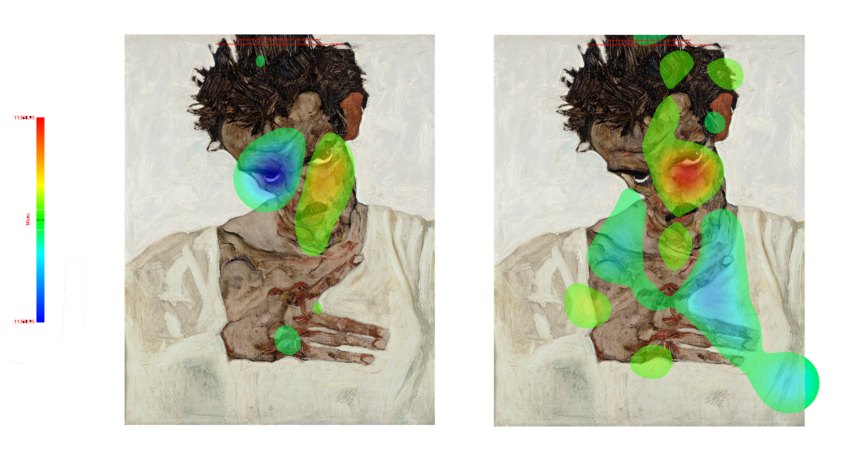Picture-Surface, Picture-Subject
Testing twofoldness in the visual perception of painting

Fixation maps of two viewers looking at Egon Schiele's "Self portrait with lowered Head" (1912)
Anna Miscenà, BA MA, uni:doc candidate
PhD project
According to aesthetic philosopher Richard Wollheim, our visual experience of painting can be described as twofold, as it involves an awareness of both the what and the how. An awareness of the pictorial subject: what it represents, what it is meant to convey; and of the pictorial surface: its physical characteristics, the medium on which it rests, the texture of the paint, its tactile properties.
Based on Wittgenstein's “Seeing-as” and Gombrich's interpretation of the same, Wollheim's theory articulates a dichotomy which, in the study of painting as an art, can be traced back at least to the nineteenth century. Since its first publication in 1987, the theory of twofoldness - as it has come to be regarded - has acquired a unique role in aesthetic philosophy, art theory, philosophy of mind and cognitive science.
Twofoldness raises fundamental questions that cut across these disciplines. How does the visual perception of a painted surface, in terms of its texture, colour value, brightness, differ in observable behaviour from that of a profile, a house or a landscape? If there is no difference, what characterises the experience of painting as twofold? And if there is a difference, is it possible to perceive simultaneously, albeit differently, the surface and the subject of the picture?
The present project begins to answer some of these questions through two lines of inquiry: first, by tracing a discourse on twofoldness in art theory, art criticism, and art history, presenting examples of how the perception of painting has been described since the nineteenth century. On the other hand, testing experimentally whether twofoldness is experienced physiologically at the level of eye movements. To this end, we conducted two eye-tracking experiments (in the laboratory and in the Leopold Museum), the design of which was informed by Wollheim and based on existing eye-tracking research on complex visual stimuli; a multidisciplinary investigation bridging philosophical traditions and experimental approaches to visual perception.
